Taking it to the park: mapping sawgrass vulnerability to peat collapse in the Florida Everglades
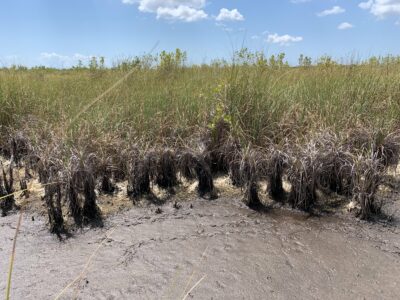
Luke Lamb-Wotton maps sawgrass vulnerability to saltwater intrusion and peat collapse at the FCE LTER site.

Luke Lamb-Wotton maps sawgrass vulnerability to saltwater intrusion and peat collapse at the FCE LTER site.
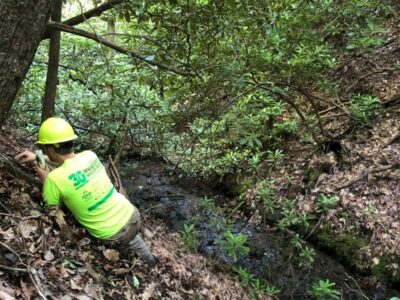
Microbial resilience and response with ongoing climate change is influenced by land use legacies at the Coweeta LTER.
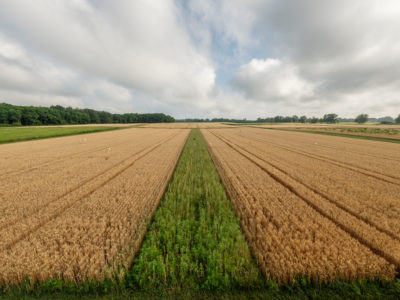
In agricultural landscapes, predatory insects provide an essential ecosystem service — valued at billions of dollars annually — by suppressing pests that damage crops. A new study that includes data from Kellogg Biological Station LTER (KBS LTER) found that natural pest suppression gains a big boost when agricultural landscapes are patchy and include a high… Read more »
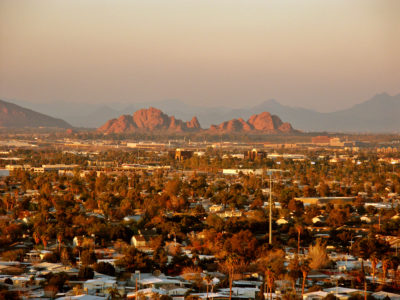
Credit: CAP-LTER. CC BY-SA 4.0 Anticipating the needs of cities in the future is a key aspect of urban sustainability. One approach to planning for sustainable cities is for researchers and practitioners to work together to develop scenarios that benefit communities as well as ecosystems. Central Arizona Phoenix LTER (CAP LTER) is taking an innovative approach… Read more »
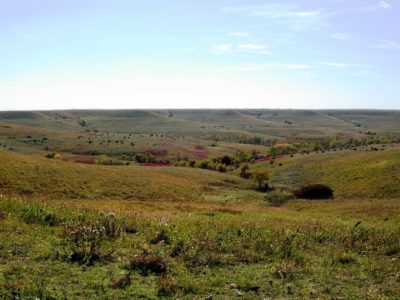
There is a surprising connection between the loss of prairie habitat in the Great Plains and the fate of Monarch butterflies. They may not be iconic in the American West, but Monarchs are important pollinators and prey for other species – and their populations in the United States are in steep decline. This is due… Read more »
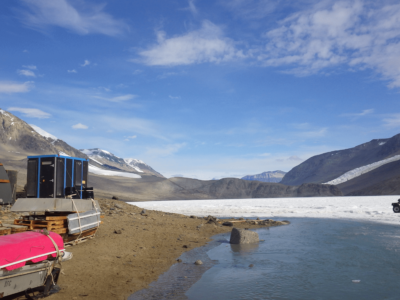
As part of their current project, researchers at MCM LTER are writing a detailed study on the environmental history of the McMurdo Dry Valleys. The monograph will be available online and published as a book with an academic press. For more information visit the McMurdo Dry Valleys History website.
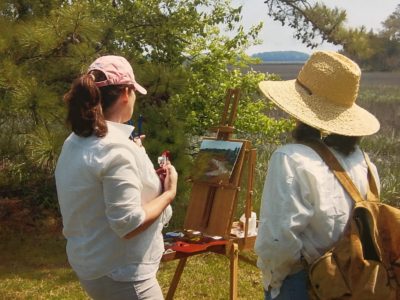
Each year, art and science teachers are invited to Art and Ecology workshops that link Plein Aire landscape painting and observational drawing to salt marsh ecology and climate change impacts on coastal ecosystems. Nearly 30 teachers per year participate in these professional development opportunities, and over half return for a 2nd workshop. Workshops focus on… Read more »
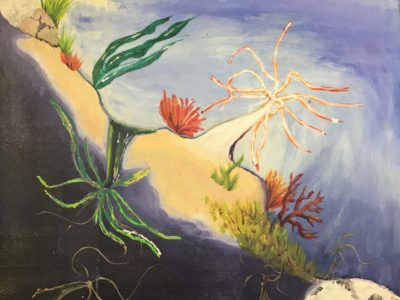
Several WHOI PIs have participated in the “STEAM” program with Falmouth High School art teacher Jane Baker. The STEAM educational movement advocates for the integration of Arts (“A”) into more traditional grouping of STEM disciplines (Science, Technology, Engineering and Mathematics). For more information, visit Ann Tarrant’s website. Project Status: Completed
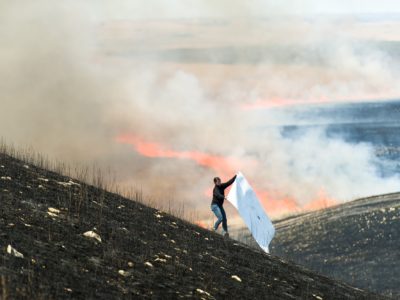
Kansas State University Associate Professor of Art Erin Wiersma creates “paintings” using charred prairie biomass by working directly with the researchers during prescribed watershed burns at Konza Prairie Biological Station. She delivered a public lecture in February 2019 at the Mariana Kistler Beach Museum of Art, Kansas State University (After the Burn: Artist talk by… Read more »

Artists are enthusiastically embraced and encouraged during their residency at Trout Lake Station. A local artist has served as a science and art champion, and guides the public through small projects at an annual Open House. This public artwork is then displayed at NTL, along with artwork donated by previous artists in residence. For more… Read more »
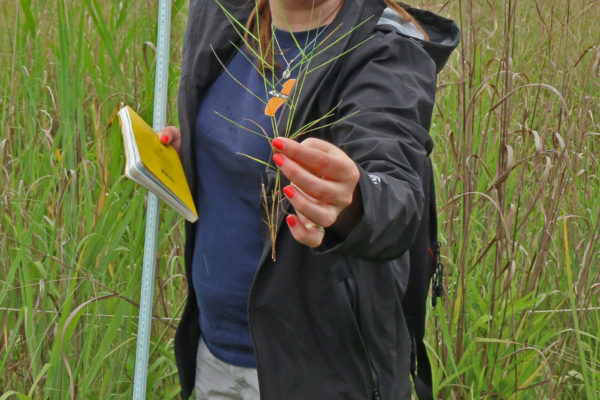 E Zambello/LTER-NCO CC BY 4.0" data-envira-gallery-id="site_images_81590" data-envira-index="10" data-envira-item-id="80806" data-envira-src="https://lternet.edu/wp-content/uploads/2019/01/Victoria-Long-600x400.jpg" data-envira-srcset="https://lternet.edu/wp-content/uploads/2019/01/Victoria-Long-600x400.jpg 400w, https://lternet.edu/wp-content/uploads/2019/01/Victoria-Long-600x400.jpg 2x" data-title="Victoria Long" itemprop="thumbnailUrl" data-no-lazy="1" data-envirabox="site_images_81590" data-automatic-caption="Victoria Long -
E Zambello/LTER-NCO CC BY 4.0" data-envira-gallery-id="site_images_81590" data-envira-index="10" data-envira-item-id="80806" data-envira-src="https://lternet.edu/wp-content/uploads/2019/01/Victoria-Long-600x400.jpg" data-envira-srcset="https://lternet.edu/wp-content/uploads/2019/01/Victoria-Long-600x400.jpg 400w, https://lternet.edu/wp-content/uploads/2019/01/Victoria-Long-600x400.jpg 2x" data-title="Victoria Long" itemprop="thumbnailUrl" data-no-lazy="1" data-envirabox="site_images_81590" data-automatic-caption="Victoria Long - PhD student Victoria Long displaying one of the plant species at her study site along Virginia's Eastern Shore, where salt marsh is starting to expand into agricultural fields.
" data-envira-height="300" data-envira-width="228" />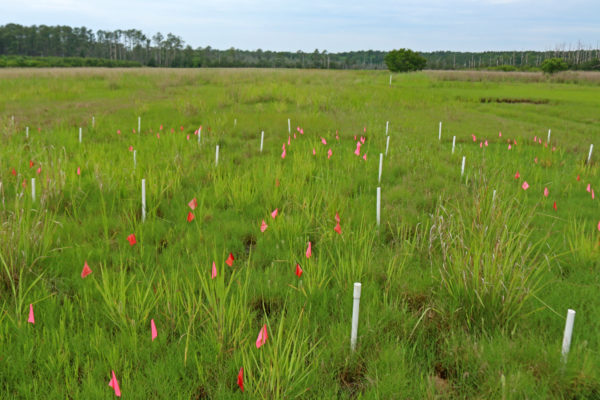 E Zambello/LTER-NCO CC BY 4.0" data-envira-gallery-id="site_images_81590" data-envira-index="11" data-envira-item-id="80805" data-envira-src="https://lternet.edu/wp-content/uploads/2019/01/Field-site-600x400.jpg" data-envira-srcset="https://lternet.edu/wp-content/uploads/2019/01/Field-site-600x400.jpg 400w, https://lternet.edu/wp-content/uploads/2019/01/Field-site-600x400.jpg 2x" data-title="Field site" itemprop="thumbnailUrl" data-no-lazy="1" data-envirabox="site_images_81590" data-automatic-caption="Field site - Long's study plots, located in an agricultural region threatened by salt marsh encroachment." data-envira-height="198" data-envira-width="300" />
E Zambello/LTER-NCO CC BY 4.0" data-envira-gallery-id="site_images_81590" data-envira-index="11" data-envira-item-id="80805" data-envira-src="https://lternet.edu/wp-content/uploads/2019/01/Field-site-600x400.jpg" data-envira-srcset="https://lternet.edu/wp-content/uploads/2019/01/Field-site-600x400.jpg 400w, https://lternet.edu/wp-content/uploads/2019/01/Field-site-600x400.jpg 2x" data-title="Field site" itemprop="thumbnailUrl" data-no-lazy="1" data-envirabox="site_images_81590" data-automatic-caption="Field site - Long's study plots, located in an agricultural region threatened by salt marsh encroachment." data-envira-height="198" data-envira-width="300" />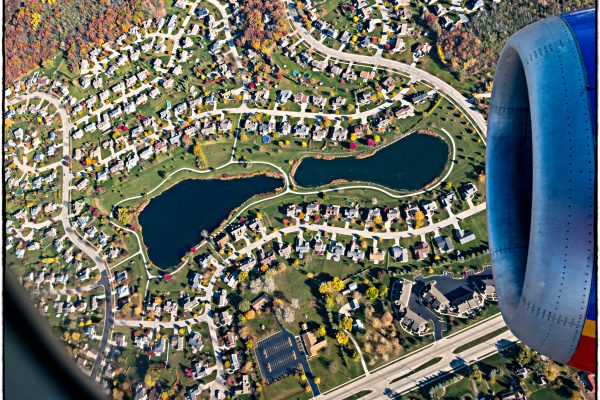 CC BY-NC 2.0" data-envira-gallery-id="site_images_81590" data-envira-index="13" data-envira-item-id="47656" data-envira-src="https://lternet.edu/wp-content/uploads/2017/11/23100091611_26762a1fac_k-600x400.jpg" data-envira-srcset="https://lternet.edu/wp-content/uploads/2017/11/23100091611_26762a1fac_k-600x400.jpg 400w, https://lternet.edu/wp-content/uploads/2017/11/23100091611_26762a1fac_k-600x400.jpg 2x" data-title="23100091611_26762a1fac_k" itemprop="thumbnailUrl" data-no-lazy="1" data-envirabox="site_images_81590" data-automatic-caption="23100091611_26762a1fac_k - Henk Sijgers. CC BY-NC 2.0" data-envira-height="225" data-envira-width="300" />
CC BY-NC 2.0" data-envira-gallery-id="site_images_81590" data-envira-index="13" data-envira-item-id="47656" data-envira-src="https://lternet.edu/wp-content/uploads/2017/11/23100091611_26762a1fac_k-600x400.jpg" data-envira-srcset="https://lternet.edu/wp-content/uploads/2017/11/23100091611_26762a1fac_k-600x400.jpg 400w, https://lternet.edu/wp-content/uploads/2017/11/23100091611_26762a1fac_k-600x400.jpg 2x" data-title="23100091611_26762a1fac_k" itemprop="thumbnailUrl" data-no-lazy="1" data-envirabox="site_images_81590" data-automatic-caption="23100091611_26762a1fac_k - Henk Sijgers. CC BY-NC 2.0" data-envira-height="225" data-envira-width="300" />